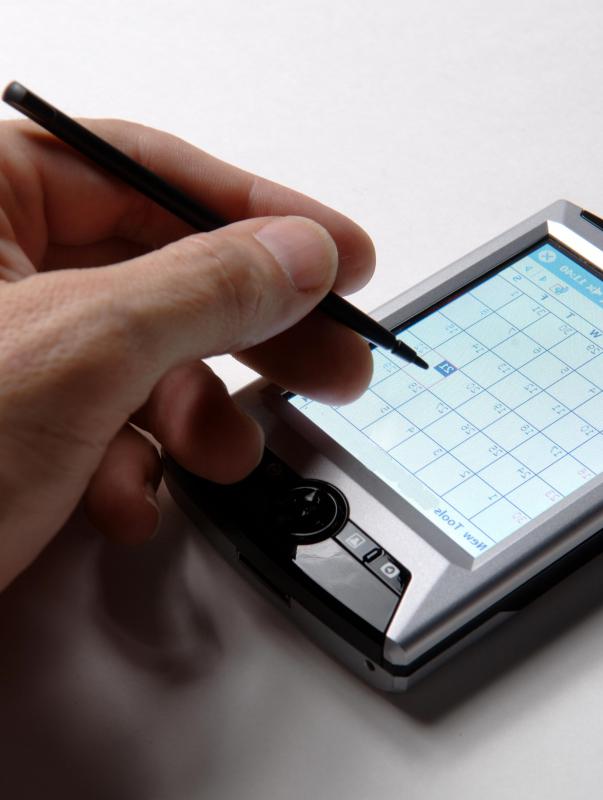At AllThingsNature, we're committed to delivering accurate, trustworthy information. Our expert-authored content is rigorously fact-checked and sourced from credible authorities. Discover how we uphold the highest standards in providing you with reliable knowledge.
What Is a Digital Field Guide?
A digital field guide is a modern electronic medium to help identify plants or wildlife, much like traditional field guides in book form. Based on photographs, text data, and even sound recordings, digital or electronic field guides provide information intended to better aid users without the need to carry heavy or bulky printed texts. Electronic field guides are, in short, electronic books or applications users download onto smart phones or other electronic devices such as tablet computer or a personal digital assistant (PDA).
Applications and digital guides include geographic or topic-specific content, offering users the ability to customize information specific to each users' preference or interest. For example, users might select an animal reference book, a bird reference book, or a nature book based on a specific city, country, or region. Each book or application has its own features and benefits, such as recordings of bird songs for bird reference books or photographs of leaves for plant identification. In terms of geographic specifics, users might choose a digital field guide with a broad regional reference such as Europe or a narrow regional scope such as London or Boston.

A typical digital field guide is not interactive, meaning it serves only as research and reference material with users determining identification based on photographs, text descriptions, and other data. Researchers continue to develop interactive applications that actively aid users with identification through object or sound recognition technologies. Users with appropriate digital field guide applications can take a photograph of a particular leaf or flower and have the application automatically identify the species based on a catalog of example photos and key characteristic markers. The application interprets user-generated photos or sound recordings, looking for key matching points to help in identification.

Various museums, universities, and national research centers across the globe continue to develop electronic field guide applications with more advanced capabilities. In the United States, the Smithsonian Institution in Washington, researchers at Columbia University, and the National Science Foundation each participate in research projects involving the development of a digital field guide with automatic recognition capabilities. Using specimens already available to these institutions, scientists take high resolution photographs to include in comparison catalogs and databases. As of 2009, the Smithsonian Institute recorded over 90,000 plant specimens, while researchers at Columbia recorded over 9,000 leaf examples for tree identification. Other researchers have cataloged dolphin dorsal fins for identification, recorded bird songs and calls for sound recognition, and created other plant and wildlife records for additional digital field guide applications.
Frequently Asked Questions
What exactly is a digital field guide?
A digital field guide is an electronic version of a traditional field guide, which is used to identify wildlife, plants, or other natural phenomena. Unlike paper guides, digital versions often include interactive features such as searchable databases, audio clips of animal sounds, and high-resolution images that can be zoomed for detailed examination.
How do digital field guides enhance the experience of nature exploration?
Digital field guides enhance nature exploration by providing instant access to a wealth of information. Users can quickly identify species using filters and search functions. Additionally, GPS integration can suggest local wildlife, and some apps even allow users to contribute to citizen science projects by recording their own observations.
Can digital field guides be used by both amateurs and professionals?
Yes, digital field guides are designed to cater to a wide range of users, from amateur nature enthusiasts to professional biologists. The user-friendly interfaces make them accessible for beginners, while the detailed information and advanced features support the work of professionals in the field.
Are there any interactive features unique to digital field guides that aren't found in traditional paper guides?
Digital field guides often include unique interactive features such as audio playback of bird songs or animal calls, in-app note-taking capabilities, and the ability to share sightings on social media or with a community of users. Some also offer augmented reality (AR) to overlay information onto the live camera view.
How reliable are digital field guides for accurate species identification?
Digital field guides are generally reliable for species identification as they are often developed by experts and organizations with authoritative knowledge. For instance, the Cornell Lab of Ornithology's Merlin Bird ID app uses data from eBird, a comprehensive database of bird observations, to provide accurate identification tools.
What are the environmental benefits of using a digital field guide over a traditional paper one?
Using a digital field guide reduces the need for paper, thereby conserving resources and minimizing waste. It also allows for real-time updates and distribution, which means that conservation status, taxonomy changes, and new discoveries can be reflected immediately without the need to print new editions, as is the case with traditional guides.
AS FEATURED ON:
AS FEATURED ON:












Discuss this Article
Post your comments